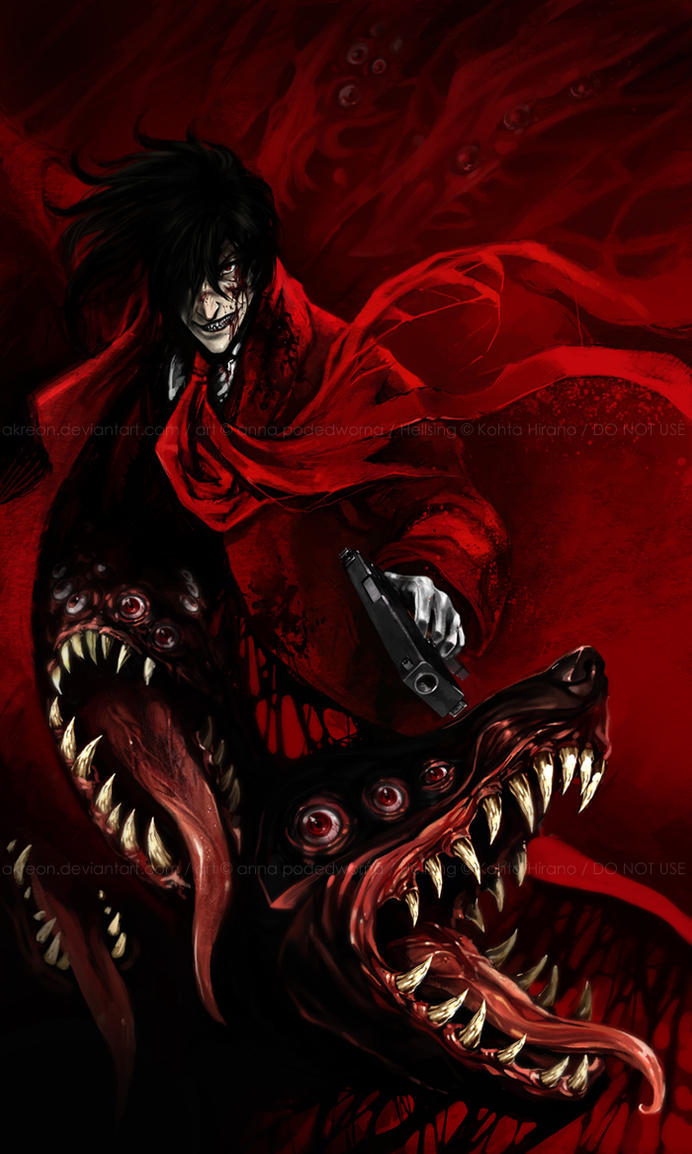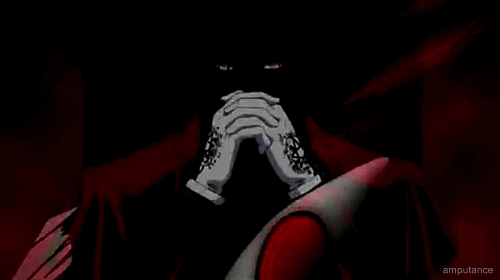-
.
Sentieri dell'Illuminazione
Un Sentiero dell'Illuminazione è un codice di 'moralità' alternativo a cui un vampiro si allinea allo scopo di controllare la bestia.
La Bestia di un vampiro è una potente manifestazione di barbarie, tentazione e caos. Si tratta di un bisogno viscerale, che deve essere addomesticato o dominato e sottomesso. L'umanità non consente nessuna di queste cose ad un vampiro. Mantenere l'umanità come codice morale è una palese contraddizione alle esigenze e necessità imposte dalla bestia e diventa un vicolo cieco senza gli strumenti adeguati. La moralità umana è impraticabile per i vampiri, la cui non vita li porta inevitabilmente a rompere molti dei tabù 'umani'.
Mentre gli esseri umani troverebbero agghiacciante il bere sangue umano, per i vampiri ciò è necessario alla sopravvivenza. Gli esseri umani condannano omicidi, stupri e altre attività disgustose. Per i Vampiri l'omicidio è un evento fin troppo frequente e ogni dissanguamento è uno stupro ad un livello al di là delle capacità umane di comprensione. Tutti questi fattori si sommano lentamente fino ad una conclusione: i vampiri non sono umani, e seguire un codice morale umano è inutile (e assolutamente pericoloso) per loro.
Con questo principio, secoli di studio e sperimentazione da parte di vampiri accademici e spirituali hanno portato allo sviluppo di codici alternativi di moralità, i Sentieri. Un Sentiero cerca di conciliare credenze e costumi dei vempiri con la loro condizione di non morti, per dare loro un modo di pensare che sia compatibile con le esigenze del vampiro e della bestia. I Sentieri sono codici etici alternativi alla moralità umana. Mentre un vampiro con umanità vede la sua bussola morale lentamente corrosa e perde quindi terreno in favore della bestia, un seguace di un particolare Sentiero la combatte o la accetta come parte del suo essere.
I Sentieri sono diversi come lo sono le religioni mortali. Essi vanno dal completamente pratico, come il Sentiero dell'Onorevole Accordo, ad altri completamente esoterici e religiosi, come il Sentiero delle Ossa. Alcuni, come il detto Sentiero dell'Onorevole Accordo cercano la totale sottomissione della bestia, mentre gli altri come l'appropriatamente chiamato Sentiero della Bestia cercano armonia e integrazione tra la coscienza del vampiro e la sua bestia interiore.
I Sentieri non sono necessariamente antagonisti degli esseri umani, e anzi alcuni pongono il danneggiare gli esseri umani come anatema nei loro codici di condotta. Piuttosto essi sono antagonisti dell'umanità, intesa come codice morale degli umani. Anche i Sentieri come il Sentiero del sangue e la Sharia El-Sama (una reinterpretazione vampirica della fede musulmana), che pongono gli esseri umani come esseri degni di protezione, considerano l'umanità inferiore e disonesta, nel senso che il tentativo di essere umani è improprio degli esseri che non lo sono più.
In Vampire: The Masquerade, i personaggi adottano i Sentieri dell'Illuminazione al fine di allontanare la bestia pur perdendo la loro umanità. I Sentieri sono in gran parte territorio del Sabbat, dato che i vampiri della Camarilla adottano l'umanità almeno parzialmente per applicare la Masquerade, ma gli anziani di questa setta non sono cosi spesso seguaci dell'umanità.Meccaniche
Virtu
The transition to a Path is not easy. A prospective Path follower literally has to rewire the way he/she thinks into a completely new and alien framework. A Path like the Path of the Bones not only denies that murder is a sin, it actually holds death as a concept worthy of worship and praise (except under extreme circumstances, paths seldom allow for mindless rampages), an attitude that would horrify any rational human being.
Part of the process of switching into a Path is adopting a different set of Virtues. Almost all paths replace one or both of the primary Virtues (Conscience and Self-Control) with an alternate.
Conviction is the virtue that replaces Conscience, and it basically represents a vampire's subscription to his new ethical code. Just as Conscience indicates a vampire's capacity for remorse for his actions, Conviction indicates his lack of remorse, his ability to justify his actions in the context of his chosen Path. Paths which espouse Conviction follow codes of ethics which are dreadful by human standards, but are effective and sensitive in a vampiric context. Conviction is actually a virtue that does exist amongst humans (religious fanatics, political extremists and military officers all show signs of this trait), yet Conviction in a vampire indicates a level of disconnection and moral aberration much more extreme than any human could possibly obtain, short of said human actually bargaining with infernal powers or somesuch. The Path of Death and the Soul, with its academic approach to the studies of the vampiric form and intense use of test subjects for investigation, is a good example of a Path that necessitates Conviction.
Instinct is the virtue that replaces Self-Control, and it basically represents a vampire's relationship with the Beast. Whereas a vampire with Self-Control tries to deny and control his Beast, a vampire with Instinct embraces the Beast as an essential part of his/her being. Vampires who follow Instinct allow their Beast to frolic, obtaining satisfaction, power and even wisdom from letting their primal sides come to the fore. While Conviction is a trait that can theoretically be found in extreme cases of humanity, Instinct is a purely vampiric trait: humans have no Beast, hence they have no capacity for this trait. The appropriately named Path of the Beast is an example of a Path which necessitates the Instinct trait.
Switching from Humanity to a Path is also quite impossible for a vampire who has average to high levels of Humanity: his/her connection to their living morality is still too strong. A vampire is ready to adopt a Path when he's fallen enough to admit that Humanity is failing, that he needs some other code to believe in. (In game terms, a vampire may not attempt to switch to a Path unless he's at Humanity 3 or lower. Furthermore, if he reduces his Path rating through sins, those mustn't be sins of the new Path. Some problems occur while switching from Humanity to a nearby Path).Iniziare con un Sentiero
Un giocatore può scegliere di iniziare ad un sentiero dell'illuminazione il proprio personaggio al momento della creazione. Così facendo, vengono riconfigurate le sue virtù di conseguenza (ciò significa che la coscienza può diventare convinzione e Self-Control può diventare istinto. Le Virtù che sostituiscono la normale virtù umana iniziano a zero, e devono essere acquistate fino ad almeno uno. I sentieri richiedono anche un minimo punteggio di forza di volontà.
La scelta del sentiero può essere limitata dal clan o dalla setta - in particolare, per i vampiri della Camarilla è fortemente scoraggiato l'utilizzo di sentieri nella setta in favore dell'umanità.Adottare un Sentiero
Adottare un Sentiero durante il gioco è un'esperienza di ruolo più complessa. Un personaggio deve trovare una guida che gli insegni il sentiero e deve ridurre la sua umanità ad un valore sufficientemente basso (3 o meno) prima che adottare un nuovo codice sia moralmente possibile. È del tutto possibile per un personaggio non riuscire ad adottare un Sentiero e cedere definitivamente alla bestia.Vivere un Sentiero
Each path adopts a separate Hierarchy of Sins which impacts the character's path rating. Unlike the hierarchy of sins for Humanity, path hierarchies usually involve condemning humane behavior. This is not to say that a follower on a path is necessarily a psychotic killer, but their reasons for preventing a murder may be radically different than those from a human perspective. A follower of the Path of Night, for example, will discourage murdering innocents in order to let them grow into the full flower of depravity before killing them.
Whether the appearance of a path is nonviolent or not, the follower of a path is inhuman. Following a path grants a vampire control over their Beast, giving them the ability to "ride the wave" in a frenzy and to wake up during the day, but it does not make them human. Path followers appear inhuman to normal human beings.
How much a path follower deviates from humanity is quite varied. Some paths draw upon human concepts, but drive them to an extreme (such as the Path of Honorable Accord). Others are more religious structures that accommodate the vampire's natural impulses towards violence and brutality while still providing a moral structure and internal logic (such as the Path of Night).
Still others adopt a bizarre and alien morality, which makes the follower a truly frightening monster: a vampire not bound by good or evil, who can perform the vilest deeds without risk of degeneration (such as the Path of Metamorphosis). Most paths are not directly inclined towards wanton aggression; rather, their sensibilities of good and evil are different (or perhaps good and evil, as concepts, simply do not exist for the follower). This results in a great deal of variety in path followers. For example, by the standards of human ethics, a Metamorphosist is far more evil and inhumane than a Path of Harmony follower.Potenziali abusi
Si mette spesso in guardia circa il potenziale rischio per i giocatori di abusare dei Sentieri, scegliendone uno solo al fine di evitare le questioni morali quando i loro personaggi commettono atti atroci. Questo viene descritto come "il Sentiero di ciò che avevo intenzione di fare in ogni caso", poiché tali giocatori non hanno mai veramente avuto intenzione di provare ad interpretare il loro personaggio della concezione 'aliena' della vita, ma vogliono un pretesto per poter imperversare senza
Edited by Lopensky - 24/1/2016, 20:00.
Sentieri dell'Illuminazione |




